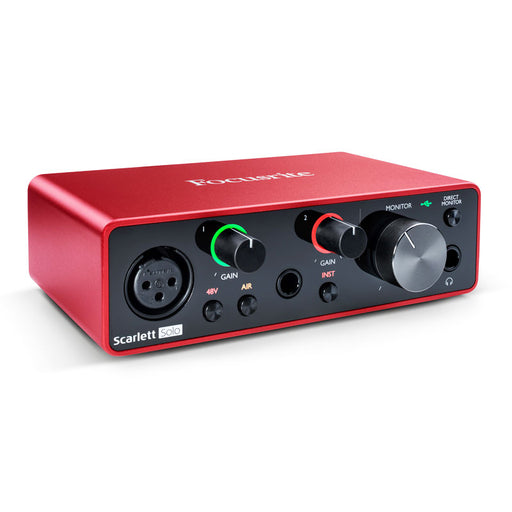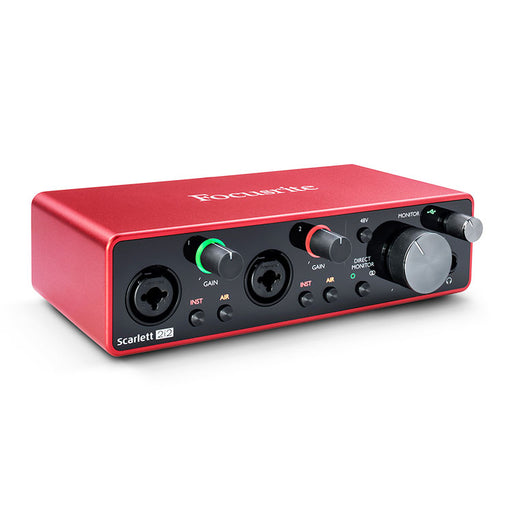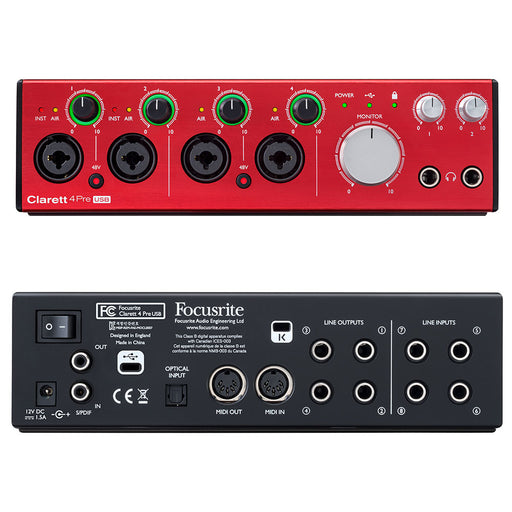Fulltone Custom Shop Solid State Tape Echo V2 CS-SSTE
The Preamp, Echo Repeats, and Echo Playback circuits are now completely isolated from each-other, allowing for:
- only one repeat with Echo Repeats knob turned down all the way. Not possible on v1.
- 100% wet echo (no Instrument sound present) with Instrument Volume set full counterclockwise. Crucial for studio use, when you want to feature or pan only the echo. Not possible with v1.
- 100% Dry Instrument sound (no echo sound present) with Echo Volume knob set full counterclockwise.
Echo Tone Knob replaces the old tone-switch for infinite control of the brightness of the echo repeats. This knob only affects the echo repeats, not your guitar (instrument) sound.
Increased shielding around the Output jack area inside the unit.
SSTEs now have a Buffer Bypass toggle-switch allowing a choice between "Buffered" or "Bypassed" output. Why? A SSTE without its output buffer is very much an early EP-3 Echoplex circuit. SSTEs & EP-3s have a pair of potentiometers on their output that cause an unhealthily-high output impedance, degrading the instrument's treble and the brightness of the repeats! BUT, some people like this effect, and I've had people ask me "Can you make yours sound more like an EP-3?" Apparently the EP-3's loaded-down output is an asset? All kidding aside, I get it, as I also prefer the sound of an SSTE with the buffer turned off.
NOTE: v2 SSTEs (any SSTE #427 or higher) and SSTEs (serial# 387 and higher) have this switch, but not the previous features.
Why do Page, early Van Halen, Brian may, Steve Stevens, etc seem to favor those early EP-3's? Because of the sound and feel of the preamp. It's that TIS58 JFET running on 22 volts, but not just that. The first version EP-3's cut a bit of Bass and boost the highs a little, creating a beautiful sound and feel that no other delay, nor any of the "EP-3 preamp pedals" can accurately create when running on anything less than 22 volts. That's just what a loud 4x12 Marshall amp needs....less bass, and more clarity.
What is the downside to using an old Echoplex? No one knows how to adjust, optimize, or repair them, AND they produce a massive amount of hum that you just have to get used to. Nowadays no one will put up with that ever-present hum. Back then they had inferior recording-head technology, crappy tape, and didn’t have a clue how to lay out a circuit. There I said it. With all those wires strewn about, all up in the air, acting like antennas, and too many grounding points, instead of tying them all together to one…no wonder Echoplexes are so damned noisy!
Features:
- 1/3 smaller than the original Echoplex (9.5" W x 7.25" D x 5.6" H) Handmade and bullet-proof.
- 1/4" tape for FAT sounding delay, using the ball-bearing equipped Fulltone ETC-2 Tape Cartridge.
- None of Hum found in vintage Echoplexes.
- Optimal 1.1 mega ohm Input impedance and super-low 10K output impedance …SSTE has none of the issues that Echoplexes have driving long cables and is not affected by devices coming before or after, either. EP-3’s have a 200K-350K output impedance and no output buffer…that causes interaction issues!
- True-Bypass toggle switch, which you won’t use much because of the SSTE’s low output impedance, but it’s nice to be able to bypass to check your levels.
- 2 Tape speeds with a moveable Playback head to achieve everything from super-quick Plate Reverb emulations, to Rockabilly slapbacks, to a full 1 second delays. Manipulating a moveable playback head is the only way to achieve the Jimmy Page-like self-oscillating trick using a tape echo.
2 Preamp Modes:
- EP-3 mode is the identical TIS58 JFET circuit of the first version (pre-serial #9451) Echoplex EP-3, offering that slight bass cut and slight treble boost favored by Page, Brian May, Steve Stevens, Tommy Bolin, etc. that works so well in high-volume stage situations.
- Full mode is dead-on, honest, full-range rich sound, just like your bypassed sound, in case you aren’t craving that unique Ep-3 color. Beautiful.
Echo Repeats - turn clockwise to add repeats, and easily go into self-oscillation around 1 o’clock depending on Record Level knob setting.
Record Level - small mini-knob adjusts how much signal smacks the tape. 3 o’clock is normal, above that and the Echoes get THICKER.
PLEASE NOTE! There are no returns on the SSTE, sales are final on these units.






